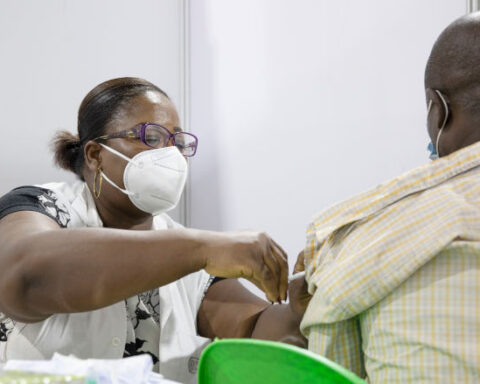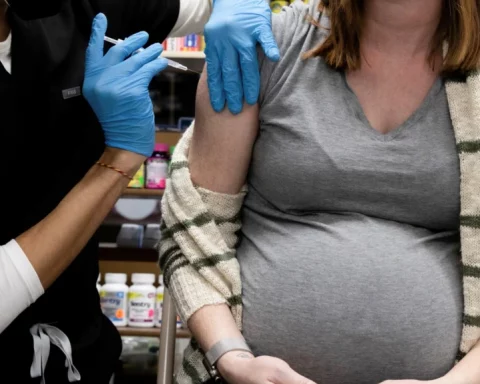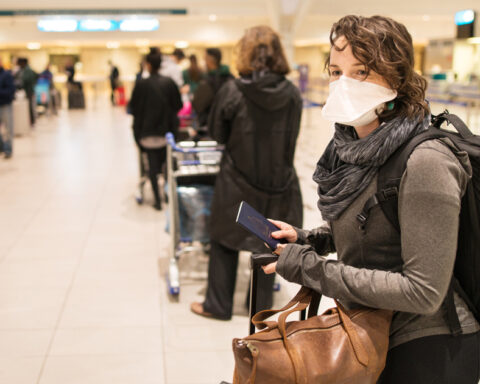The pandemic has affected how we prepare for emergencies in a number of ways, including how we gather emergency supplies, what we include in our emergency supply kits, where we shelter, and how we seek care and preventive services.
These tasks can seem more daunting when dealing with multiple disasters or public health emergencies at the same time. In 2020, the Centers for Disease Control and Prevention (CDC) conducted two online surveys to assess people’s attitudes and behaviors about going to a disaster shelter during the COVID-19 pandemic. Responses showed that people were concerned about the combined effects of these disasters, including concern about potentially being exposed to COVID-19 in a public shelter. With this information, CDC and its partners can better address specific concerns and make sure the public knows the steps that are being taken to protect them in disaster shelters, should they need to evacuate.
What we learned over the past year
Emergency managers often seek to understand communities so that when disaster strikes, they can protect those at greatest risk with effective messaging and instructions. In June 2020, CDC surveyed 500 adults from across the country. The survey asked respondents how the pandemic may affect their plans to shelter for disasters, including hurricanes, tornadoes, and wildfires. The concern about the combined effect of these disasters was apparent in the responses: 52% of respondents said worries about getting a COVID-19 infection could keep them from going to a shelter during an extreme weather incident. And 64% said they would bring a mask in their shelter “go bag.”
CDC explored these concerns further with an online survey in October 2020. The agency surveyed 3,000 adults from 98 counties in 8 states along the Atlantic and Gulf Coast that have experienced recent hurricanes. About 28% of respondents said they had changed their emergency response plans because of the COVID-19 pandemic. People listed fears about going to a shelter, such as other people not wearing masks, being unable safely distance from those outside their households, and concern about older family members getting COVID-19.
Respondents said they would be more likely to go to a shelter if, among other criteria, masks were required (42%), hotels were used as shelters (40%), distance was kept between different households at the shelter (38%), and medical care was available in the shelter (36%).
Adapting disaster sheltering for the pandemic
Anticipating questions about safe sheltering during the pandemic, CDC worked with the Federal Emergency Management Agency (FEMA) and the American Red Cross in spring of 2020 to develop shelter guidelines that can protect people against COVID-19. These strategies, implemented in 2020, included the following:
- Limit the use of congregate (group) facilities, such as gyms and convention centers, and instead use sheltering options like hotel and motel rooms.
- Implement public health measures where the use of congregate shelter options may still be required, including
- Keeping people with symptoms of COVID-19 in a separate area of the shelter, and referring them to medical care when needed;
- Requiring the use of masks inside the shelter, and
- Encouraging distancing, handwashing, and the use of hand sanitizer.
2020 was a record year for wildfire activity and for hurricanes, with 30 named storms.
The American Red Cross provided 1.2 million nights of shelter stays in 2020. About 90% of the evacuees stayed in hotel rooms.
While it’s difficult to determine if some occupants developed COVID-19 in a disaster shelter in 2020, the CDC and the Red Cross are not aware of any COVID-19 outbreaks in disaster shelters. In addition, the Louisiana Department of Health reported no COVID-19 spikes after either Hurricane Delta or Hurricane Laura.
Prepare and protect your health
CDC continues to work with FEMA, the American Red Cross, and other emergency partners to provide public health guidance to help protect shelter residents from COVID-19. CDC and partners continue to recommend that a range of disaster sheltering options be made available to individuals in line with guidance from appropriate state and local health officials, and that available options incorporate the use of COVID-19 protective measures, such as mask wearing and distancing, when group shelters must be used.
Additional information on FEMA assistance available to state, local, tribal and territorial partners during the COVID-19 pandemic can be found at Bringing Resources to State, Local, Tribal & Territorial Governments | FEMA.gov.
Getting a COVID-19 vaccine as soon as you can is one more step you can take to protect yourself and others when in a group setting. People can be better protected in shelters when most people around them have also been fully vaccinated.
However, CDC is not making a recommendation that shelters require proof of vaccination to shelter.
“Access to safe shelter from disasters is critical even during community spread of COVID-19,” said Captain Renee Funk, associate director for emergency management for CDC’s National Center for Environmental Health and Agency for Toxic Substances and Disease Registry. “Therefore, shelters should accept all people seeking safety regardless of vaccination status.”
The end of hurricane season, on November 30, also overlaps with the start of the flu season in October. Since storms can form and make landfall late in the hurricane season, it is possible you may have to evacuate to a shelter in October or November. Getting vaccinated for the flu protects you and may also protect other evacuees, including those who are at risk for serious illness.






